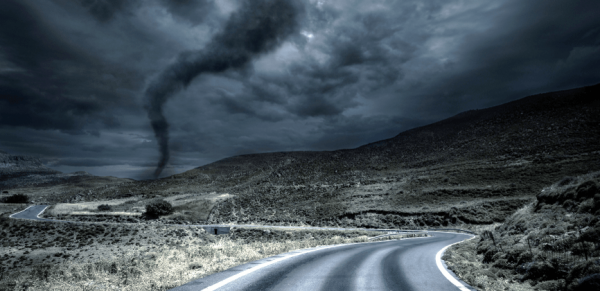Natural disasters come at a moment’s notice. You can predict oncoming hurricanes, tornadoes, and storms, but can’t do anything about unexpected wildfires. When natural disasters do happen, try to remember what your online defensive driving course has taught you as well as the tips below.
What do you do whenever a natural disaster strikes?
Depending on the circumstance, there’s a standardized step-by-step action guide to steer you to safety when you’re driving during an unfortunate event. You can turn the natural disasters into natural good fortune. To stay prepared and ahead of the storm, we’re prepping you on your safety protocol when on the road during a natural disaster.
Hurricanes and Tornadoes
If you live on the coast or somewhere in the Midwest, you could be subjected to hurricanes or tornadoes. These vats of swirly winds can be memorizing to look at, but dangerous to drive through. When driving through a hurricane or tornado, finding shelter is important.
Staying inside your car will be helpful only to drive to the nearest safety location. Stores or houses serve as excellent shelter during these disasters. If those options aren’t available, your next best option is to find shelter under a highway overpass.
Moreover, you should avoid driving through water as it can damage your car. This will leave you susceptible to being stranded. Also, be on the lookout for debris and downed electrical wires. Driving through these disasters are dangerous, you don’t want to be caught off guard with manmade disasters.
Hail Storms
Hail falls at high speeds. Sometimes these chunks of ice can be as large as a golf ball. With that massive at a high enough velocity, you could damage your vehicle when driving it on the road during a storm. When you’re on the road during a hail storm, you should pull over immediately.
Try to find a sheltered area where your car can park to be out of the line of fire. If you can’t find an overhead structure to shield your car, try angling it in the direction of the hail path. This will create a smaller target and less damage to be accrued.
Wildfires
The best way to drive during a wildfire is: don’t. Wildfires are extremely dangerous when you’re stuck in your car. However, there is a safety procedure in the even that you are trapped in a car during a wildfire.
Roll up all the windows of the vehicle, close the air vents, and keep the engine running. Doing so will prevent smoke bellowing into the vehicle. The next step is to lay down in the flooring of your car. Smoke rises to the top, so staying as low as possible is the only way to avoid the breathing in the harmful air.
If you must drive, do so with your high beams on. Driving slowly will help you catch any debris that could damage your vehicle. The next thing to remember is to remain calm.
Floods
Blockbuster films like to dramatize tidal waves sweeping cities and causing mayhem in its path. This could be farfetched, but flooding isn’t an impossibility. When driving during a flood, try your best to not use your car as a boat.
In fact, try to avoid all water the best of your ability. Especially moving water. Driving through the water could cause your car to become stuck or get swept away in an unseen current. You may have the urge to drive through the water like you’re on Splash Mountain but try your best to fight that urge. Drive slow through the water to protect your engine and brakes.

 Live Chat
Live Chat






